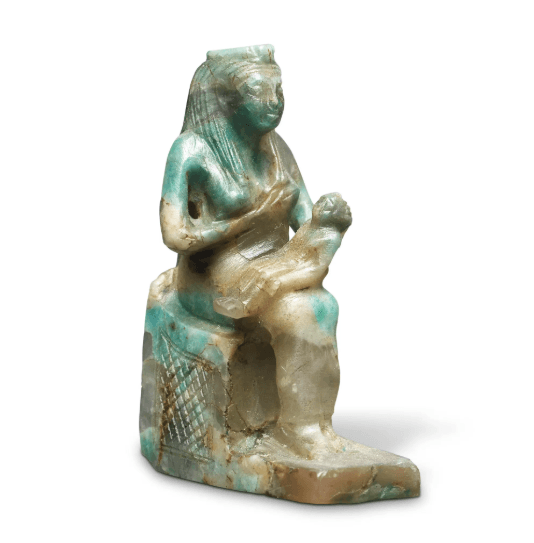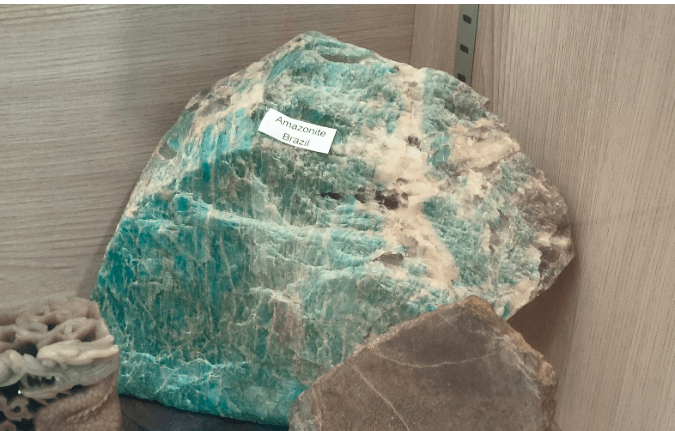This month we’re featuring a feldspar gemstone many of you might have heard of: the amazing stone!
History & Meaning
Amazonite has a long history, with records dating back to Mesopotamia (10000 years ago!). Ancient Babylonians used it to construct seals, while the slightly less ancient Egyptians held it in high regard. They used it for jewelry and decoration, carving it into beads, amulets and various trinkets. Pharaohs even had their tombs decorated with it, with one famous example being King Tutankhamum’s tomb where some of his jewelry, most notably his mask, had parts made from this stone.

An Egyptian amazonite statuette of Isis and Horus from https://www.bonhams.com/auction/30103/lot/178/an-egyptian-amazonite-statuette-of-isis-and-horus/
Though this stone has been known by many names throughout its long history, its current name came from the mineralogist August Breithaupt in 1847 as it had been believed to be found near the Amazon river.
Colors
This mineral is generally green or blue-green, and can be translucent or opaque.

Properties
This stone is a variety of microcline, an alkali feldspar (having potassium). Like other feldspars, it has a hardness of 6 – 6.5. It is predominantly triclinic, which is the least symmetric of the seven basic crystal systems and looks like a 3D parallelogram.
Location
This mineral was mostly found in the south eastern parts of Bronze age Egypt, though now it is mined from many other places like Russia, the USA, and other parts of Asia, Africa and Europe as well. It can be found in granitic rocks (igneous rocks rich in quartz and feldspar) in these places.
Fun Facts
The source of this stone’s green colour confounded many for years. Some thought it was from copper, as many copper minerals were blue or green. Recent publications though point to other metals like lead, or even some compounds like lead oxide. Solid lead is a metallic gray while solid lead oxide is white, yet they can turn this stone green. It really goes to show the wonders of chemistry!


